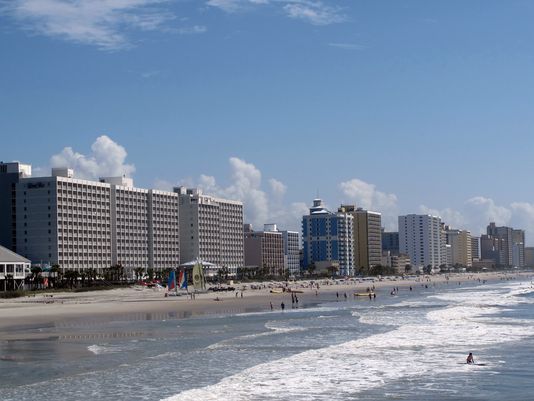Rising sea levels, warming temperatures, heat waves, worsening air quality and stresses on the water supply are issues the Southeast will face over the next 20 years because of man-made climate change, according to a report released Tuesday.
"The Southeast is a key part of the problem," said Keith Ingram, director of the Southeast Climate Consortium and a professor at the University of Florida. "With 26% of the total population of the U.S. living there, the region emits 25% of the country's total carbon dioxide emissions."
Ingram spoke at a press conference in Gainesville, Fla., where the report was released.
The report, titled Climate of the Southeast United States: Variability, Change, Impacts and Vulnerability, is part of the National Climate Assessment, an analysis mandated by Congress as a comprehensive national look at the effects of climate change.
Among the projected impacts of climate change in the Southeast:
• Average annual temperatures are projected to increase through the 21st century. Some areas are expected to warm by as much as 9 degrees.
• Temperatures exceeding 95 degrees are expected to increase across the Southeast, and the number of heat waves is expected to jump by between 97% and 234% through the end of the century.
• Stresses on the water supply are projected to increase significantly over next 3 1/2 decades.
• Average sea-level rise across the Southeast coast is expected to be between 1 and 5 feet by the end of 21st century.
• High-temperature stresses are expected to become more frequent, damaging crops and driving dairy and livestock production north.
• Air quality is projected to decline and pollen counts to rise.
"Climate variability is already affecting the southeastern U.S. and a changing climate is projected to increasingly affect the region in the next 20 years and beyond," Ingram added.
"There are numerous efforts already underway in the Southeast to mitigate and adapt to climate change," said Lynne Carter, associate director of the Southern Climate Impacts Planning Program at Louisiana State University. "Among the most successful are efforts in several states to plan for sea level rise, including incorporating the risk of sea level rise into statewide risk planning."
"Much more can be done, from protecting our forests and wetlands, which help store carbon, to improving the region's energy efficiency, building codes and use of renewable energy," she said.
The report reviewed data from Kentucky, Virginia, Arkansas, Tennessee, North Carolina, South Carolina, Louisiana, Mississippi, Alabama, Georgia, Florida, Puerto Rico and the U.S. Virgin Islands.
Source: USA Today






